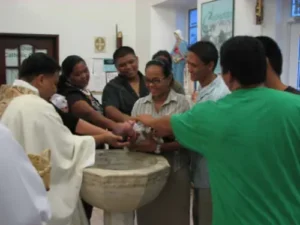
Kumpaire/Pari’
Kumpaire or pari’ is a religious and social term used to describe the relationship between parents and their child’s godfather. The word kumparie was borrowed

Kumpaire or pari’ is a religious and social term used to describe the relationship between parents and their child’s godfather. The word kumparie was borrowed
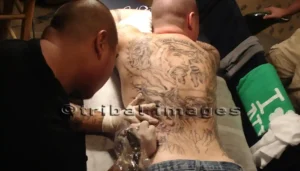
Tattooing is an art with more visible modern roots than other practices on Guam. Although tattooing is well-documented in other Micronesian cultures including Yap, Palau

Kumaire, is religious and social term to describe the relationship between parents and their child’s godmother, borrowed from the Spanish comadre and appropriated into CHamoru

Ma uritao, an ancient CHamoru term used before Christianity was introduced to the CHamoru people, describes young unmarried women who resided at the Guma’ uritao

Marianas archaeological studies indicate that, as a craft, an indigenous form of ceramics dates back to more than 3,000 years. Ancient Chamorros produced a variety
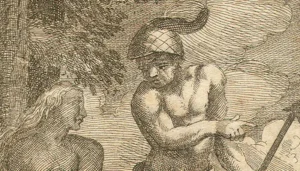
When Chamorro/CHamoru males reached puberty during ancient times, they were sent to live at the Guma’ Uritao, a house for bachelors. The bachelors would live
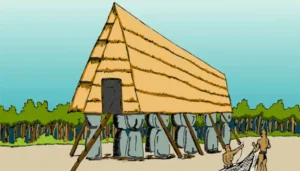
I mangguma’ uritao, men’s houses, were houses for young CHamoru men in the Mariana Islands from ancient times until the late 1600s (‘I’ means ‘the’;
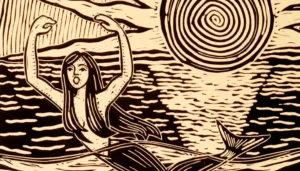
The mythological maiden, Sirena, in the ‘I Tetehnan’ manuscript is considered a proverb, and not a legend.
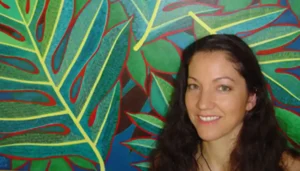
Monica D. Baza discovered art at an early age, choosing to work with lino-block printing in high school when it was offered. She went on
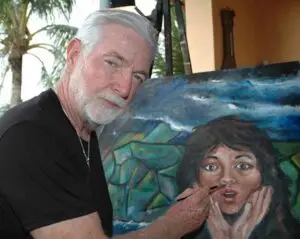
Moe Cotton, born in 1935 in Pittsburgh, Pennsylvania, got his start as an artist at a young age. He would often test the patience of